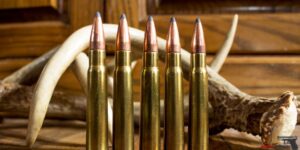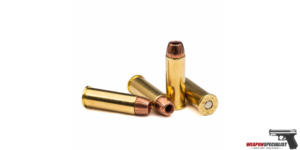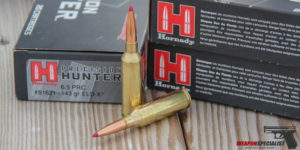If you’ve ever learned about vintage rifles, smokeless gunpowder is probably not a strange concept. However, manufacturers are less and less interested in the industrial production of this gunpowder because of its low yield.
Many professionals often try to make a small amount on their own for personal taste. If you are looking for complete instructions, I will help you understand the process of how to make smokeless gunpowder in the article below.
What is Smokeless Gunpowder?
Smokeless gunpowder was created as a safer alternative to traditional gunpowder. It produces less smoke and residue when fired, making it more environmentally friendly. Additionally, it provides greater accuracy and consistency compared to traditional gunpowder.

Pros and Cons of Smokeless Gunpowder
Pros
- Less smoke and residue: This makes it a better choice for indoor shooting ranges and areas with poor ventilation.
- Greater accuracy and consistency: Smokeless gunpowder has a more predictable burn rate, leading to greater consistency in shot grouping.
- Safer: Smokeless gunpowder is less likely to cause accidental fires or explosions, making it a safer choice for shooters.
Cons
- More expensive: Smokeless gunpowder is more costly to produce due to its complex chemical composition.
- Require specialized equipment: Due to its unique properties, smokeless gunpowder requires specialized equipment and knowledge to manufacture safely.
- Difficult to store: Smokeless gunpowder can be unstable if not stored properly, which can pose a risk to both the shooter and their surroundings.
How To Make Smokeless Gunpowder?
Before learning how to make smokeless gunpowder, let’s start with its ingredients.
The main components

Smokeless powder is not smokeless. Yet, its characteristic is that it transforms into gasses during combustion and leaves behind 55% of the solid residue.
The components of smokeless gunpowder are nitrocellulose and nitroglycerine, which undergoes drying. Before that, it comprised a concentrated mixture of nitric and sulfuric acids.
During development, gunpowder was applied to guncotton, a product of nitrification in torpedoes and warheads.
Step by step to follow
- The first and most crucial step in ammunition making is measurement. Experts use different measurement methods to find the most accurate or approximate results. It helps to make ammunition less dangerous compared to not calculating.
- The next process follows the multistage evaporation to remove the unreacted acid from the pyrocellulose.
- You can then use alcohol to remove the remaining chemicals from the pyrocellulose by high pressure.
- Further, remove the water and add it to the ether & diphenylamine.
- After the alcohol and ether disappear, the mixture converts to a small powder and has a long-lasting soluble concentration.
- The powder particles go through a tower process to sort and remove ballistic contrast agents before creating the finished product.
- The finished product comes in many forms, such as powder, flakes, or tablets. They will have different fire rates to suit each rifle or pistol.
How To Stabilize Smokeless Powders?

The main ingredient of smokeless gunpowder is Nitrocellulose. This substance is capable of self-degradation over time, and the by-product of this process is often acidic.
They can catalyze decomposition and speed up chemical reactions. Yet, you can stabilize gun powder by adding calcium carbonate to create a neutral mixture.
The main task of this product is to prevent building deterioration in powder.
Smokeless Powder Types
The smokeless powder comes in many shapes. The manufacturer also packs it into small round balls or carton strips in various cross-sections. They even use ethers as solvents.
They can also cut these products into short pieces for long periods. The calculation and characterization of the applied force can affect the estimation process and the particle’s form.
The face zone of the fuel will have a specific impact on the burning rate and shape of the particles. If you want to control and regulate a specific shape, it impacts the burning rate and can increase weight during combustion.
The powder works and will burn on the face of each piece. Large parts burn faster, and you can control the reaction rate with a flame-retardant coating.
How Do People Manufacture Smokeless Powders In The Past?
To fight at naval gunfire sites in India, the US Navy made a powder.
In 1907, they used comparative methods to create stock at Pica’s small arsenal.
About 30 years later, in 1940, they also made smaller-sized strides. Today, there are many licensed manufacturers that produce this military material.
In the composition of smokeless powders, the role of cotton fibers is in soda to absorb grease. Experiencing a manufacturing process including many chemical formulas, manufacturers have created powders for military use.
Could Old Powders Be Available?
Military powders are completely valid when crafting unused parts of propellants.
The powder or pyrocellulose is breakable with ethyl acetic acid as the derivation and fixative. The manufacturer uses syrup, surfactants, warm water, and pressurized racks to mix this mixture.
After this chemical reaction, you will get a circular emulsion extracted from ethyl acetic acid that has undergone distillation. The experts then removed the nitrocellulose and other additives, including nitroglycerine, to extend its life.
It causes a certain smoothness between the rollers: more accurate calculations and coating of phthalate obstructions that can impede detonation.
FAQs
Q: What’s the difference between black powder and gunpowder?

Unlike gunpowder, black powder is usually less pure and coarser. During combustion, the black one produces its odor and has black soot.
In contrast, powder has a certain fineness and purity. It is also smokeless after use, often available in firearms.
Q: Where do you get potassium nitrate?
You can find pure potassium nitrate in “stump remover” at Home Depot or Lowes in the United States.
They are licensed to supply this product and several other places. The Spectracide brand is one of the manufacturers that sell its products in insecticide stores.
Q: Can gunpowder burn without oxygen?
You don’t need to use oxygen for “gunpowder” combustion because the current smokeless powder mainly uses nitrocellulose and nitroglycerine.
They all contain oxygen in their chemical composition, so you don’t need to add oxygen. In contrast, the black powder used in ancient guns would use charcoal, potassium nitrate, and sulfur.
Q: What is saltpeter made out of?
Saltpeter is another name for potassium nitrate, which is white. It is a compound of elements such as nitrogen, oxygen, and potassium.
Governments, scientists, and professionals often regulate this compound in producing fertilizers, quinoa, or fireworks.
Q: What are the three ingredients used to make gunpowder?
Previously black powder was usually a combination of 3 sulfur substances, salt powder (potassium nitrate) and charcoal.
Manufacturers use smokeless gunpowder, with the main ingredients being nitrocellulose and nitroglycerine.
Q: Is it legal to make your own smokeless gunpowder?
A: In most countries, it is legal to make your own smokeless gunpowder as long asyou have the necessary permits and licenses. However, it is important to check with your local laws and regulations before attempting to make any type of gunpowder.
Q: Can smokeless gunpowder be used in any type of firearm?
A: Smokeless gunpowder can be used in a variety of firearms, including rifles, handguns, and shotguns. However, it is important to use the correct type and amount of powder for your specific firearm model to ensure safe and accurate performance.
Q: How does smokeless gunpowder compare to other types of gunpowder?
A: Smokeless gunpowder has several advantages over other types of gunpowder, including less smoke and residue, greater accuracy and consistency, and increased safety. However, it is typically more expensive and requires specialized equipment to manufacture.
Q: Is smokeless gunpowder more dangerous than traditional gunpowder?
A: No, smokeless gunpowder is generally considered safer than traditional gunpowder due to its reduced smoke and residue production and increased stability. However, like all types of gunpowder, it should be handled with caution and respect for its potential dangers.
Q: What should I do if I accidentally inhale smokeless gunpowder?
A: If you accidentally inhale smokeless gunpowder, seek medical attention immediately. Symptoms may include coughing, difficulty breathing, and chest pain, and can be potentially life-threatening.
Final Words
The article has helped you understand how to make smokeless gunpowder. Although the production technology is quite old, smokeless gunpowder has certain advantages in the military to create a combat advantage. Hopefully, with the above guide, you can understand the production steps and their main components. Thank you for reading!
Last Updated on November 1, 2023 by







Can smokeless gunpowder be used interchangeably between different firearms?
No, it is essential to use the appropriate type and amount of smokeless gunpowder for a specific firearm and cartridge. Each firearm and cartridge have specific load data that dictate the appropriate powder charge. Using the wrong type or amount of gunpowder can result in dangerous overpressure or underperformance, posing a significant risk to the shooter and the firearm.